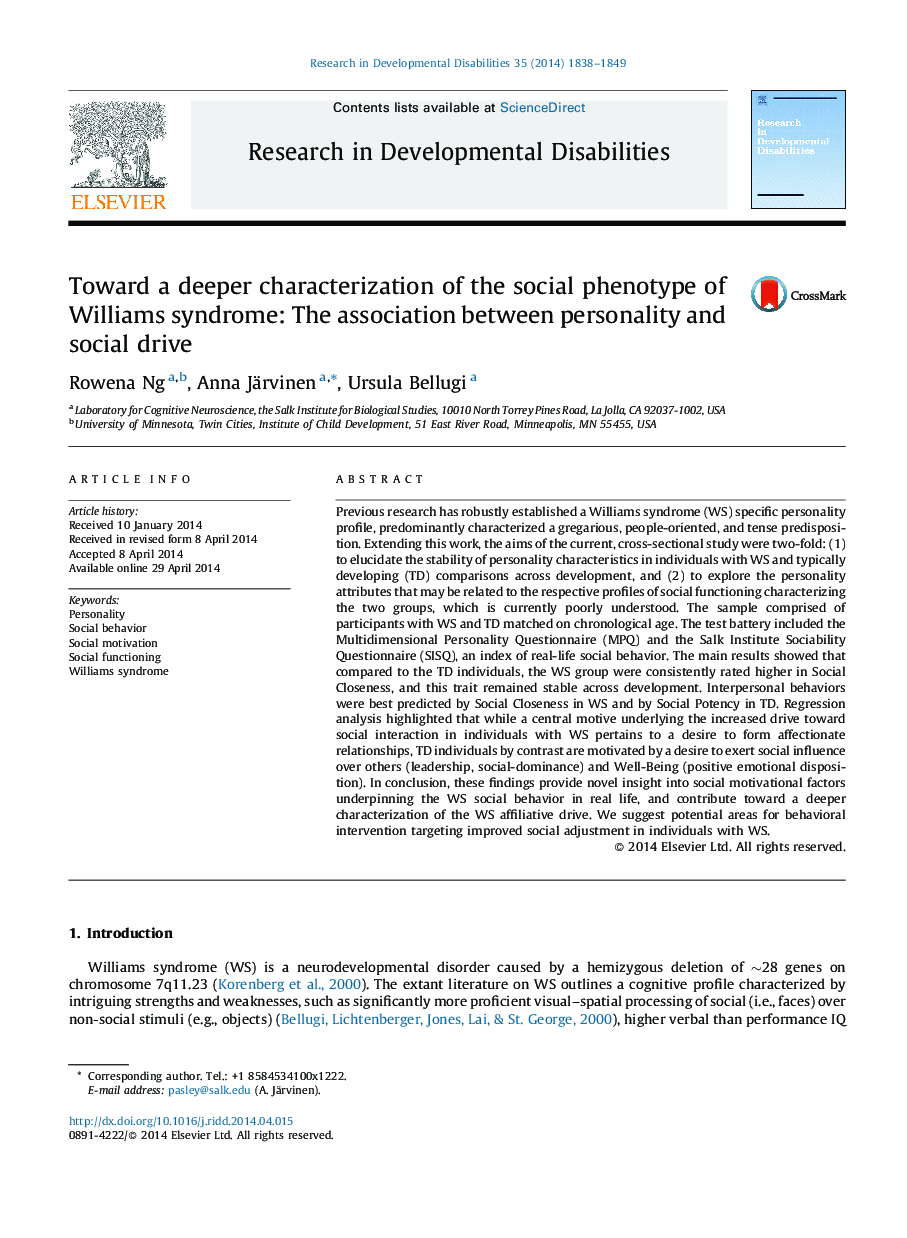| کد مقاله | کد نشریه | سال انتشار | مقاله انگلیسی | نسخه تمام متن |
|---|---|---|---|---|
| 371498 | 621925 | 2014 | 12 صفحه PDF | دانلود رایگان |
• Williams syndrome (WS) is characterized by a unique social personality profile.
• Associations between personality traits and social functioning were examined.
• The personality trait of Social Closeness was a robust predictor of social functioning in WS.
• In typical development, the strongest predictor of interpersonal behaviors was Social Potency.
• The personality attributes linked to interpersonal behaviors diverge in WS and TD.
Previous research has robustly established a Williams syndrome (WS) specific personality profile, predominantly characterized a gregarious, people-oriented, and tense predisposition. Extending this work, the aims of the current, cross-sectional study were two-fold: (1) to elucidate the stability of personality characteristics in individuals with WS and typically developing (TD) comparisons across development, and (2) to explore the personality attributes that may be related to the respective profiles of social functioning characterizing the two groups, which is currently poorly understood. The sample comprised of participants with WS and TD matched on chronological age. The test battery included the Multidimensional Personality Questionnaire (MPQ) and the Salk Institute Sociability Questionnaire (SISQ), an index of real-life social behavior. The main results showed that compared to the TD individuals, the WS group were consistently rated higher in Social Closeness, and this trait remained stable across development. Interpersonal behaviors were best predicted by Social Closeness in WS and by Social Potency in TD. Regression analysis highlighted that while a central motive underlying the increased drive toward social interaction in individuals with WS pertains to a desire to form affectionate relationships, TD individuals by contrast are motivated by a desire to exert social influence over others (leadership, social-dominance) and Well-Being (positive emotional disposition). In conclusion, these findings provide novel insight into social motivational factors underpinning the WS social behavior in real life, and contribute toward a deeper characterization of the WS affiliative drive. We suggest potential areas for behavioral intervention targeting improved social adjustment in individuals with WS.
Journal: Research in Developmental Disabilities - Volume 35, Issue 8, August 2014, Pages 1838–1849
